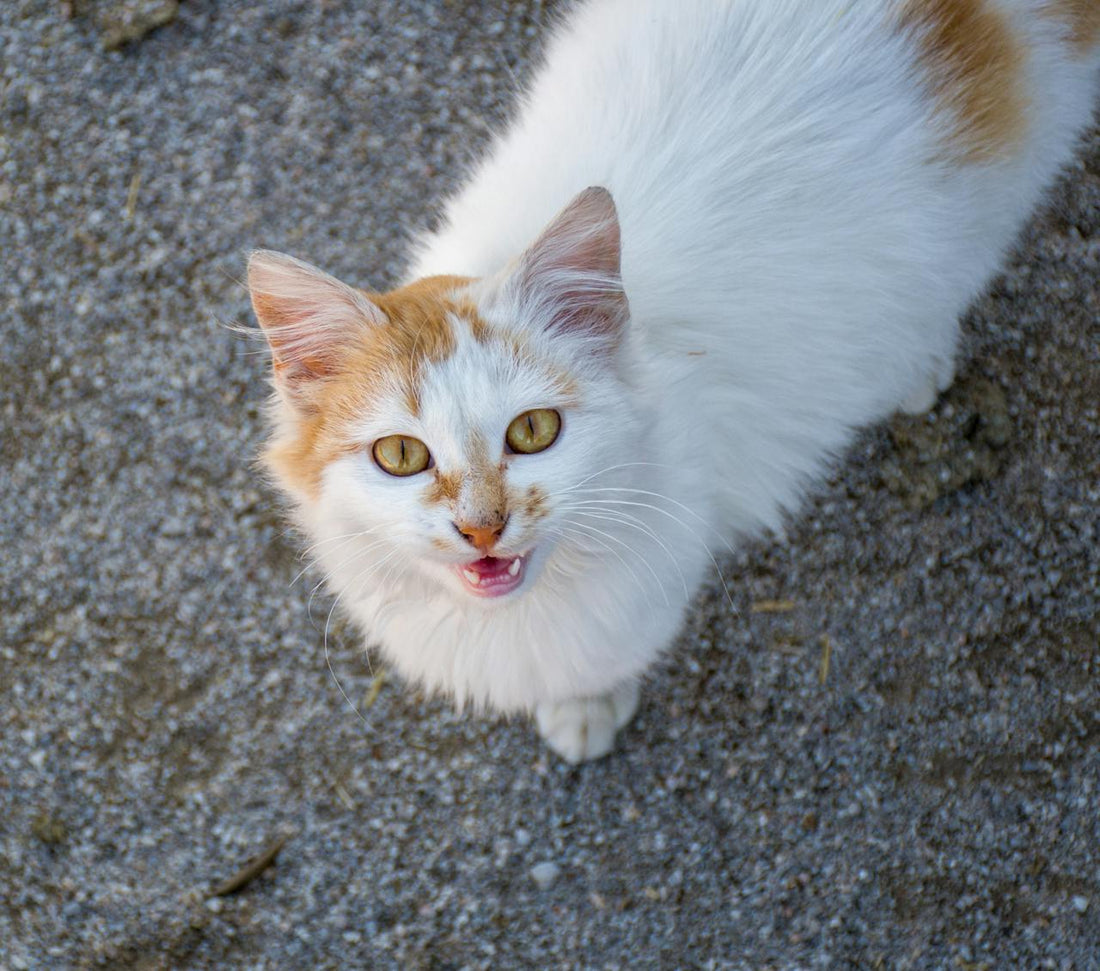
What are Happy Cat Sounds? Here are 5 Sounds your Cat Makes
Share
Are you ready to become a cat whisperer? Here are the secrets of your furry friend's communication; strengthen your bond with this comprehensive guide to happy cat sounds. As a devoted cat parent, understanding your pet's vocalisations is key to ensuring their well-being and happiness.
5 cat sounds to understand your cat better
"Purr"
Let's start with the quintessential happy cat sound: the purr. This soothing vibration is your cat's way of saying, "I'm in kitty heaven!" But did you know that purring isn't just a sign of contentment? It can also be a self-soothing mechanism or even a healing tool. Next time you hear that motorboat sound, know that your feline companion is in their happy place.
"Chirp, Chirp"
Ever caught your cat making strange chirping noises while watching birds? This unique vocalisation, often called "cat chattering," is a fascinating blend of excitement and frustration. It's your indoor hunter's way of expressing their natural instincts. Providing interactive toys can help satisfy this urge and keep your cat mentally stimulated.
"Trill"
Nothing warms a cat lover's heart quite like the sweet sound of a trill. This charming vocalisation is your cat's way of saying, "Hey there, favourite human!" Trilling is a sign of affection and a warm greeting in the feline world. Encourage this behaviour by responding positively to reinforce your bond.
"Meow" Mix
While not all meows signal happiness, understanding the nuances of your cat's meows is crucial for effective cat care. A soft, short meow might be a gentle "hello," while a series of meows could indicate excitement or a desire for attention. Learning to distinguish between different meows will make you a pro at meeting your cat's needs. Let's dive into the fascinating world of cat meows and what they might mean:
The Gentle Greeting Meow
- Sound: Soft, short, and sweet
- Meaning: A simple "hello" or acknowledgment
- When to expect it: As you enter a room or return home
The Demanding Meow
- Sound: Repeated, insistent, and often increasing in volume
- Meaning: "I want something, and I want it now!"
- Common causes: Hunger, desire to play, or need for attention
The Long, Drawn-Out Meow
- Sound: Elongated and often mournful
- Meaning: Expressing dissatisfaction or complaint
- Possible reasons: Locked out of a favourite room, empty food bowl
The Chirp-Meow Hybrid
- Sound: A cross between a meow and a chirp or trill
- Meaning: Excitement or anticipation
- When to listen for it: Before mealtime or playtime
The Low-Pitched Meow
- Sound: Deep and sometimes growl-like
- Meaning: Often a warning or expression of annoyance
- Context: When feeling threatened or irritated
The High-Pitched Meow
- Sound: Sharp and piercing
- Meaning: Pain or extreme distress
- Important note: Always investigate these meows as they may indicate a health issue
The Silent Meow
- Sound: Mouth opens, but no sound comes out
- Meaning: A polite request or greeting
- Often seen in: Older cats or those trained to be quiet
The Chatter-Meow
- Sound: Rapid-fire meows mixed with chattering
- Meaning: Frustration or excitement, often prey-related
- Commonly heard: When watching birds or squirrels outside
Cat Body Language
Remember, vocalisations are just one part of feline communication. To truly understand your cat's emotions, pay attention to their body language too. A raised tail, slow blinks, and relaxed ears are all signs of a happy, content kitty.
By mastering the art of interpreting cat sounds and body language, you'll elevate your status from cat owner to cat communication expert. This deeper understanding will lead to a happier, healthier relationship with your feline friend.
Want to learn more about cat behaviour and care? Subscribe to our newsletter for weekly tips on creating the purr-fect environment for your furry companion!
